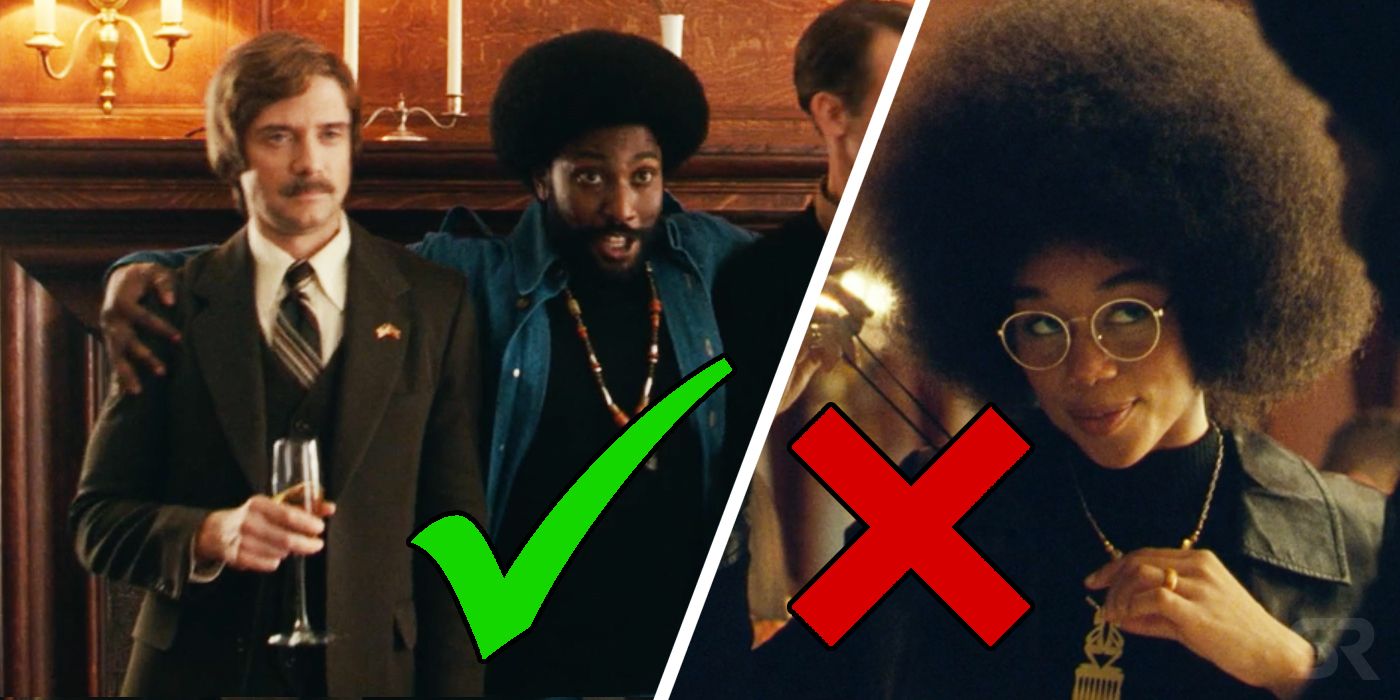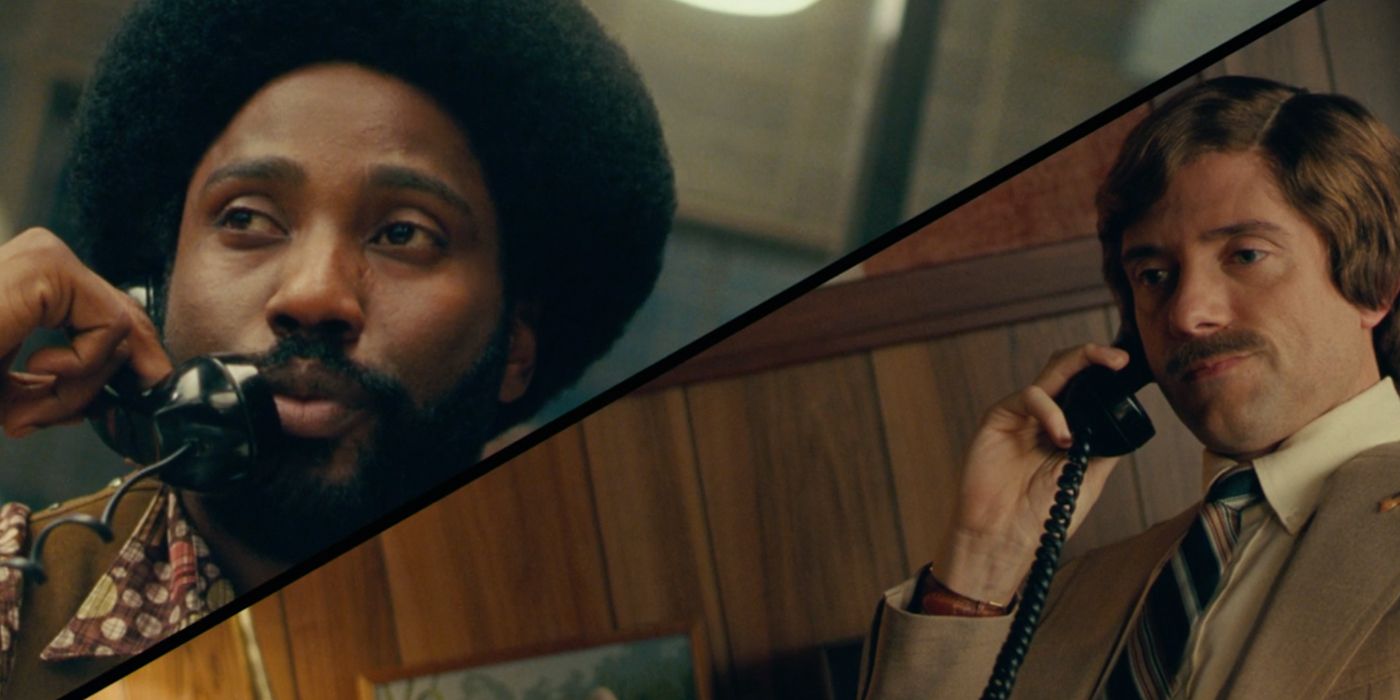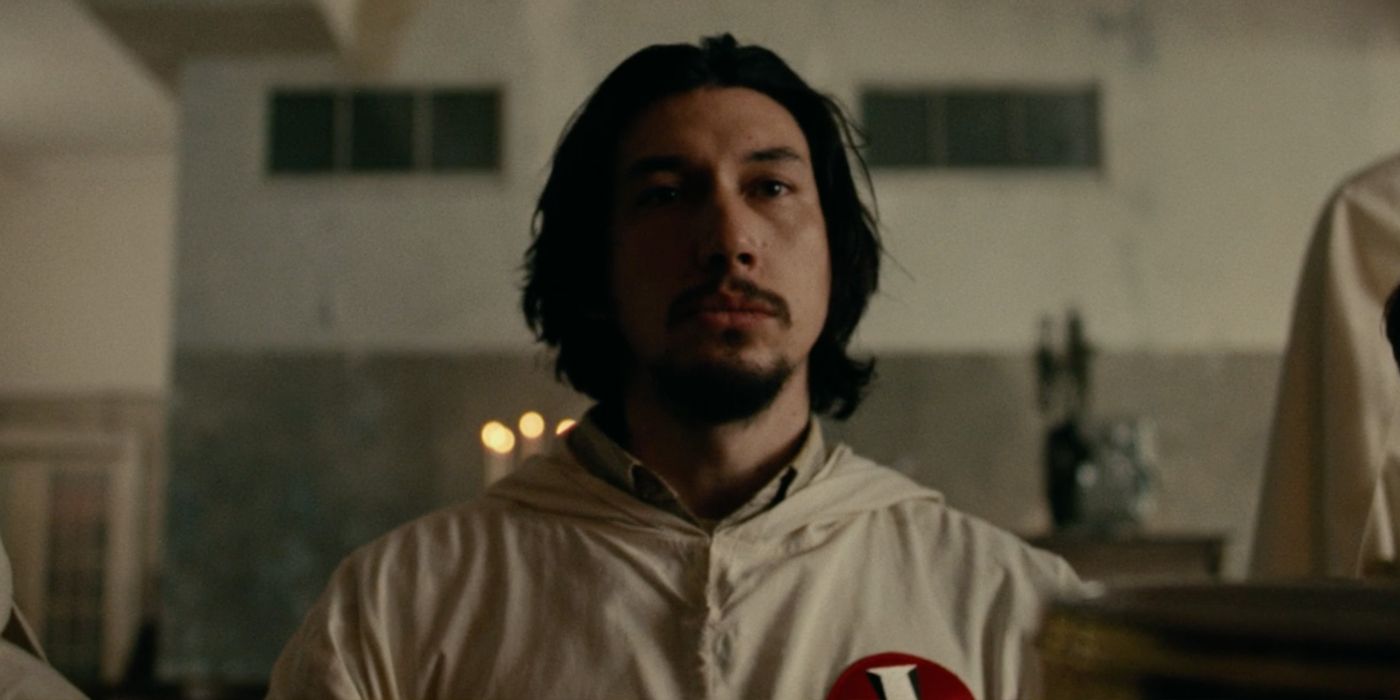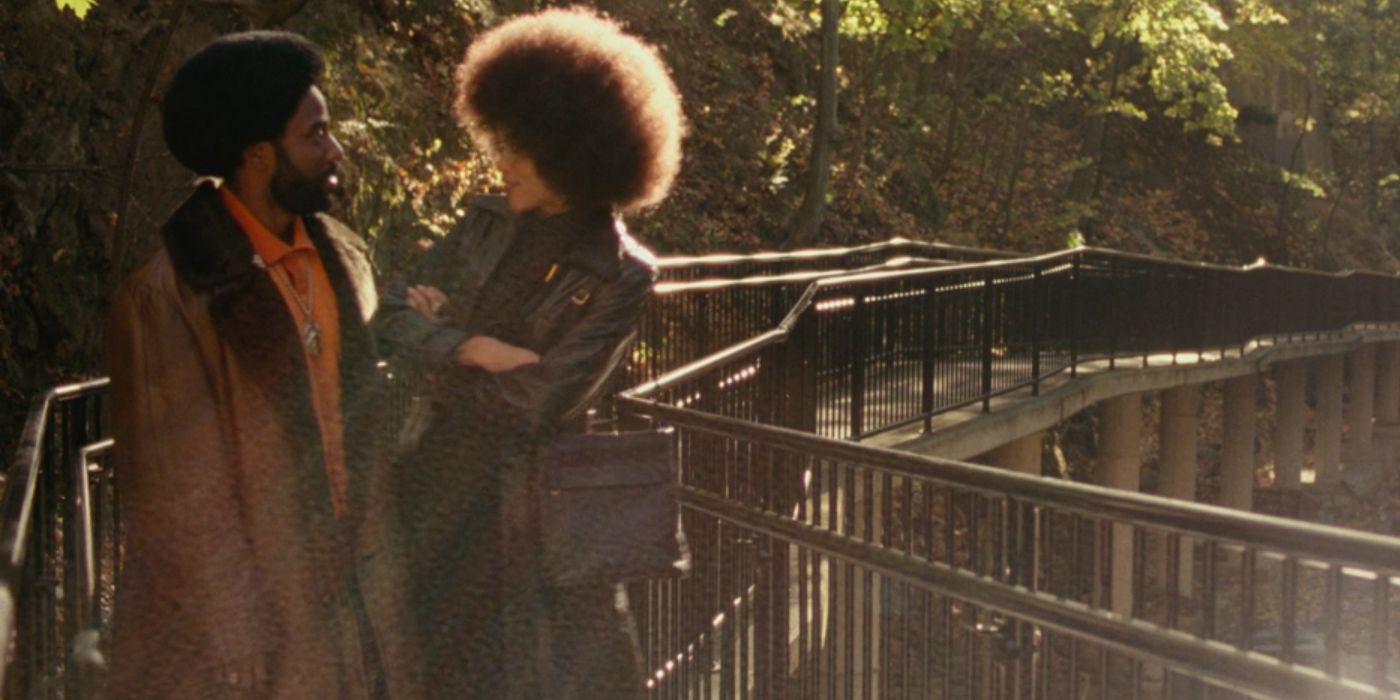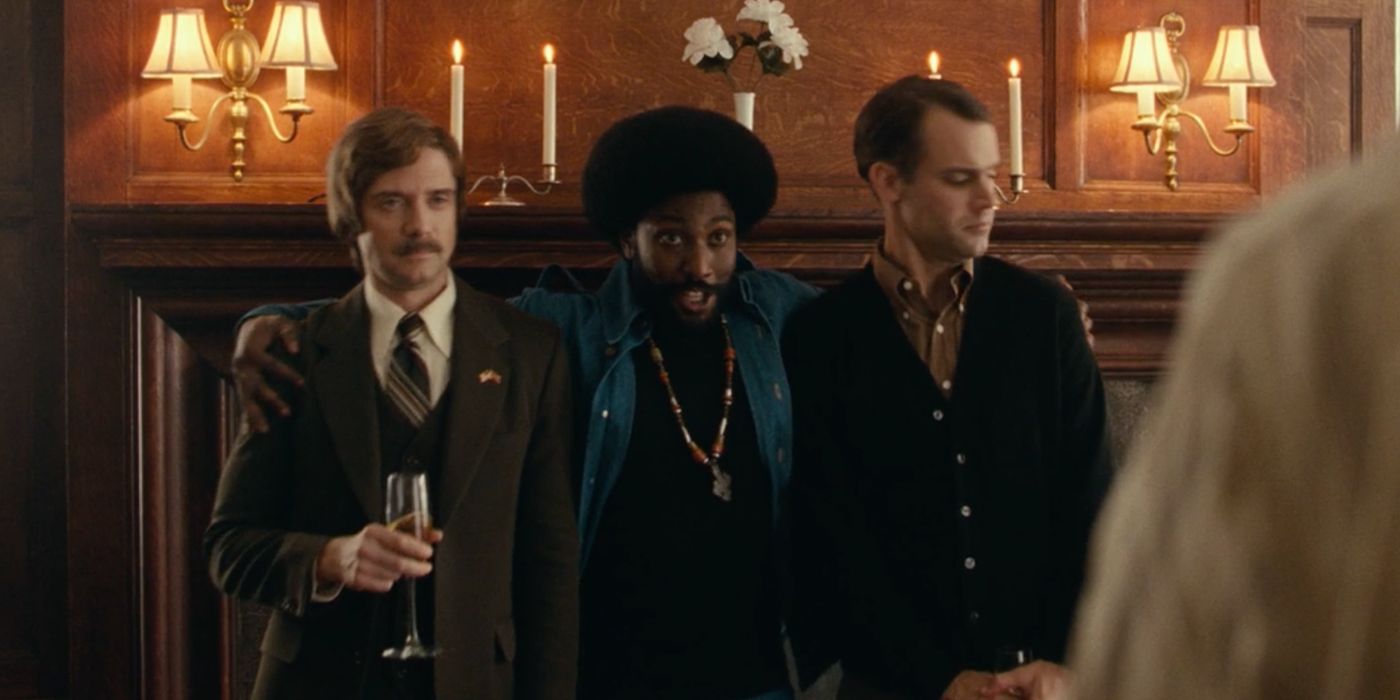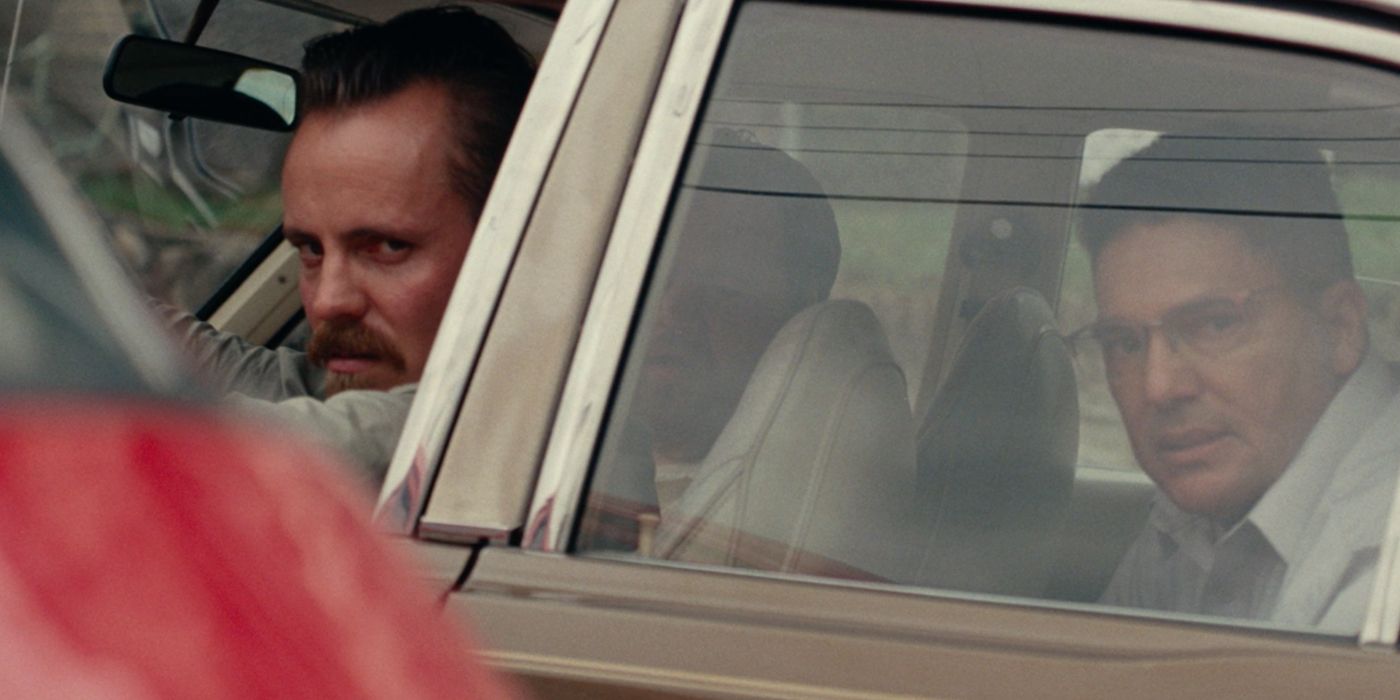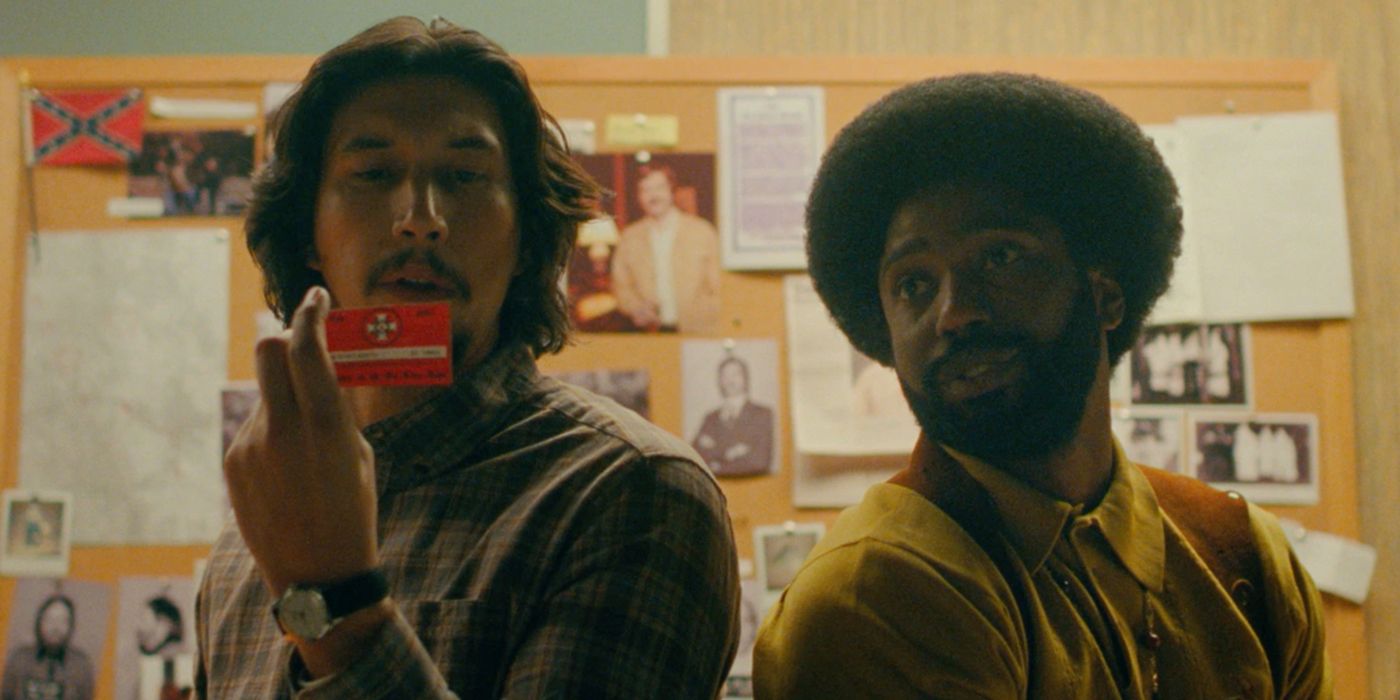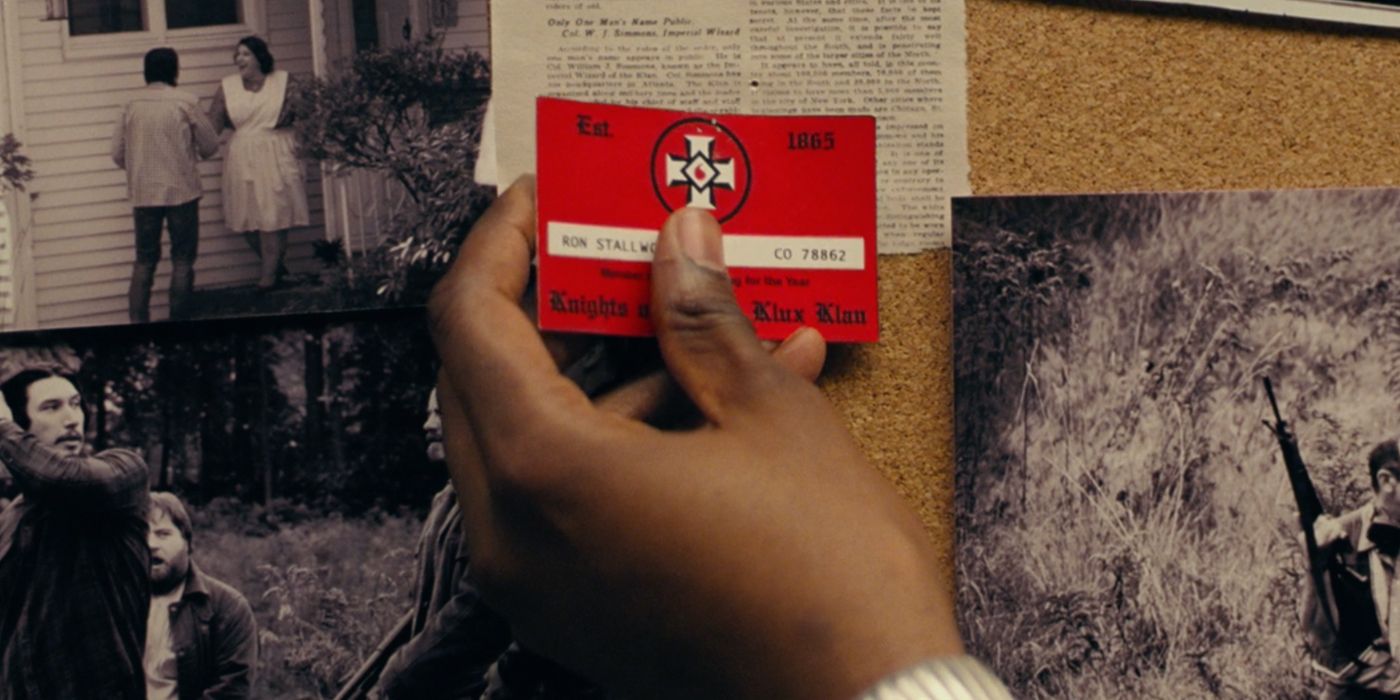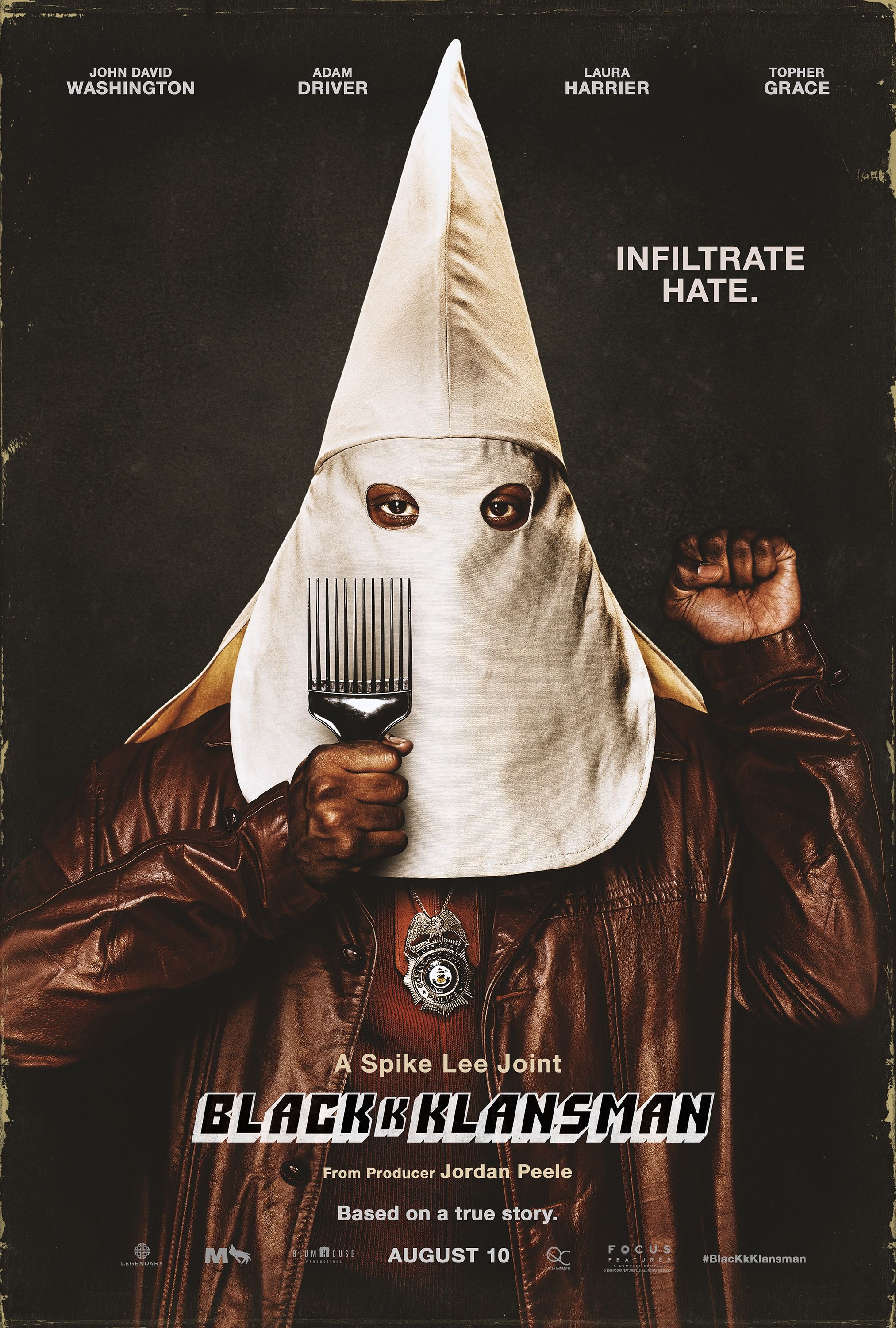BlacKkKlansman is, unbelievably, based on a true story, but how much of Spike Lee's tale of a black detective who infiltrated the KKK over the phone and had a white officer play him in person actually happened? In short, a surprisingly large amount.
Starring John David Washington and Adam Driver, BlacKkKlansman takes a very comedic approach to its storytelling, constantly pointing out the ridiculousness of the investigation. The movie even opens with a tone-setting claim that "Dis joint is based on some fo' real, fo' real sh*t". This, along with the heavy use of race-based Hollywood propaganda - Birth of a Nation and Gone With The Wind are repeatedly cited - creates a sense of almost heightened reality.
Related: Read Our BlacKkKlansman Review
However, the core of the story really did happen. Spike Lee isn't just trying to dramatize a piece of long-past history; BlacKkKlansman is intending to show how, while the white hoods are gone, the racial hatred that defines the KKK is still coursing through America's veins. To do that, he made sure the movie held up to factual scrutiny, with most changes done to amplify the parallels between Ron Stallworth's investigation and what's happening now in Trump's America.
- This Page: What Was Real & False About BlacKkKlansman's Investigation
- Page 2: How BlacKkKlansman's Ending Twists The Truth
How Ron Stallworth Joined The KKK Is (Almost) Entirely True
The core of BlacKkKlansman's story is rooted in the real Ron Stallworth's detailed account of the investigation (from his 2014 book Black Klansman). He was the first black officer on the Colorado Springs police force, first went undercover to a Stokely Carmichael speech, and as a detective, set up the Ku Klux Klan investigation almost by accident. He got in contact the KKK after seeing an advertisement in the local paper and, after feigning a white racist attitude (including bemoaning a fictional black man dating his daughter), was invited to meet the chapter of the organization. A white colleague was used for the in-person Ron, and everything snowballed from there.
So, the majority of the first act of the movie is, dramatic license allowed, true. Even Ron's reason for giving his real name - he didn't expect it to become an undercover investigation - and the single time his different voice was challenged - explained as a sinus infection - are accurate.
The big differences is in how Ron first made contact. In the movie, Washington calls a number, leaves his details, then gets a return call. However, in reality the KKK advert only had a P.O. Box: Stallworth sent a letter and later got a followup call. This change was clearly done for pacing, getting to the investigation quicker (and also showing the Klan's immediate enthusiasm).
Adam Driver's Character Has Never Been Named (And Wasn't Jewish)
While Ron Stallworth in BlacKkKlansman is pretty accurate to the real man (who Lee and Washington met before making the film), the same can't be said for Adam Driver's Flip Zimmerman. A white police officer did successfully infiltrate the KKK, but there are some key factual differences.
Stallworth's real colleague wasn't called Flip Zimmerman - his true identity remains a mystery, in accounts known only as Chuck - and there's no indication that he was Jewish. This means the entire subplot involving Flip's heritage and the conflict it creates both internally and within the KKK is a fiction made for the movie (that also means the lie detector and Ron's window-smash are false). Considering how conveniently it reflects Ron's arc, that isn't too surprising, but the depths it takes the story to make the change understandable.
There's also nothing to suggest that Flip's identity was ever discovered by an ex-con as happens in BlacKkKlansman's final act; as we'll see, the surrounding events to that shocker didn't happen and the investigation was shut down for entirely different reasons.
Patrice Dumas Never Existed (Nor Did The Investigation's Links To The Black Power Movement)
A key subplot in both Ron's personal life and the KKK investigation involves the Black Power Movement, with Stallworth finding himself romantically involved with "pig"-hating student activist Patrice Dumas just as the Black Student Union she runs is making waves in Colorado Springs.
Verifiably true is that Stallworth attended a black student event shortly before the investigation started and the KKK were, naturally, negative towards civil rights. Beyond that, though, this entire aspect of the film fictional; Patrice didn't exist, with her character a composite of women in the Black Power Movement with no links to Ron. Essentially, Lee seems to be taking the time's wider national situation and transplanting it to this one town for the sake of contrast.
Page 2 of 2: How BlacKkKlansman's Ending Twists The Truth
Ron Stallworth Was David Duke's Personal Security And Did Get A Photo
The finale of BlacKkKlansman sees all the plot threads come together in sickeningly tense fashion. And, fitting of the true-with-specks-of-false nature of those threads, the third act plays out as a cocktail harsh reality and evocative fiction.
Startlingly true is pretty much everything that happens between Ron Stallworth and David Duke. He was appointed personal security for the Grand Wizard at an event where the undercover Chuck was also present (although the visit wasn't part of any ceremony and took place at a regular restaurant) and did ask for a polaroid to document the unbelievable event. This was taken by Flip/Chuck and Ron did put his arms around Duke, causing the expected enragement. The photo has since been lost.
There Was No KKK Terrorist Attack In Colorado Springs
While the polaroid is real, the other big event in the finale - the failed terrorist attack - isn't; Walter and his group of radical Klansmen were fictitious, and there are no records of any bomb attacks in Colorado Springs. This is probably the biggest twist of the truth in BlacKkKlansman, with the final act hinging on an event that didn't happen. In reality, the photograph was the only point of conflict in Duke's visit, with it not serving as the culmination of the investigation. Given that the Black Power Movement's connection to the investigation and Flip's Jewish heritage were created for the movie, this shouldn't be too surprising.
That's not to say Lee is fully exaggerating. During his investigation, Ron and Chuck did hear talk of potential attacks, and after the sting folded there was a string of explosive-related arrests of Klansmen who were led by one of the men they had been in contact with.
The Investigation Was Successful... And Shutdown Suddenly
Taking away the terrorism aspect, though, the overall scope of the investigation is accurately shown in the film. Stallworth did successfully identify several military personnel as part of the Ku Klux Klan, including two working at NORAD. That said, the information was passed on not in a shady underpass deal, but involved visiting a high-security facility where the names were cross-referenced, and Ron never learned which of the suspects they were (although does know they were transferred to a cold, Northern military facility).
Despite that success, the investigation was shut down suddenly by the police chief without any real explanation. The film somewhat hints at the increased stakes of the bombing play a part, but makes clear it's a wider fear or reluctance within the department, which is accurate to Stallworth's experiences.
Ron Stallworth Kept His KKK Membership Card (And Didn't Reveal The Truth To David Duke)
After the investigation ended, Ron Stallworth continued his police career in a normal manner and never discussed what had occurred until the publication of his book in 2014.
Because that's not a fully cathartic end-note, however, Spike Lee introduces two key moments to resolve the story. The first is Stallworth revealing to David Duke what's been going on over the phone, mocking his perceived ability to tell a white man's voice and confirming the cop from the photograph has been leading an investigation. The second is more divergent: the real Ron framed his KKK membership card as a lone reminder of the investigation, whereas the movie version tosses it at the earliest opportunity. Both changes shift the tone of the ending, but ultimately give a more satisfying conclusion... until Lee reminds that the Charlottesville riots show the Klan is very much alive and well in America.
-
Moreso than most "true story" movies, BlacKkKlansman endeavors to stick as close to reality as possible. A series of thematically-motivated shifts lead to entirely fictitious events in the third act, but them being the product of Spike Lee does nothing to rob the film of its authenticity. After all, the real point of the movie is not about Colorado Springs, but the whole issue of racism across the entire country.

